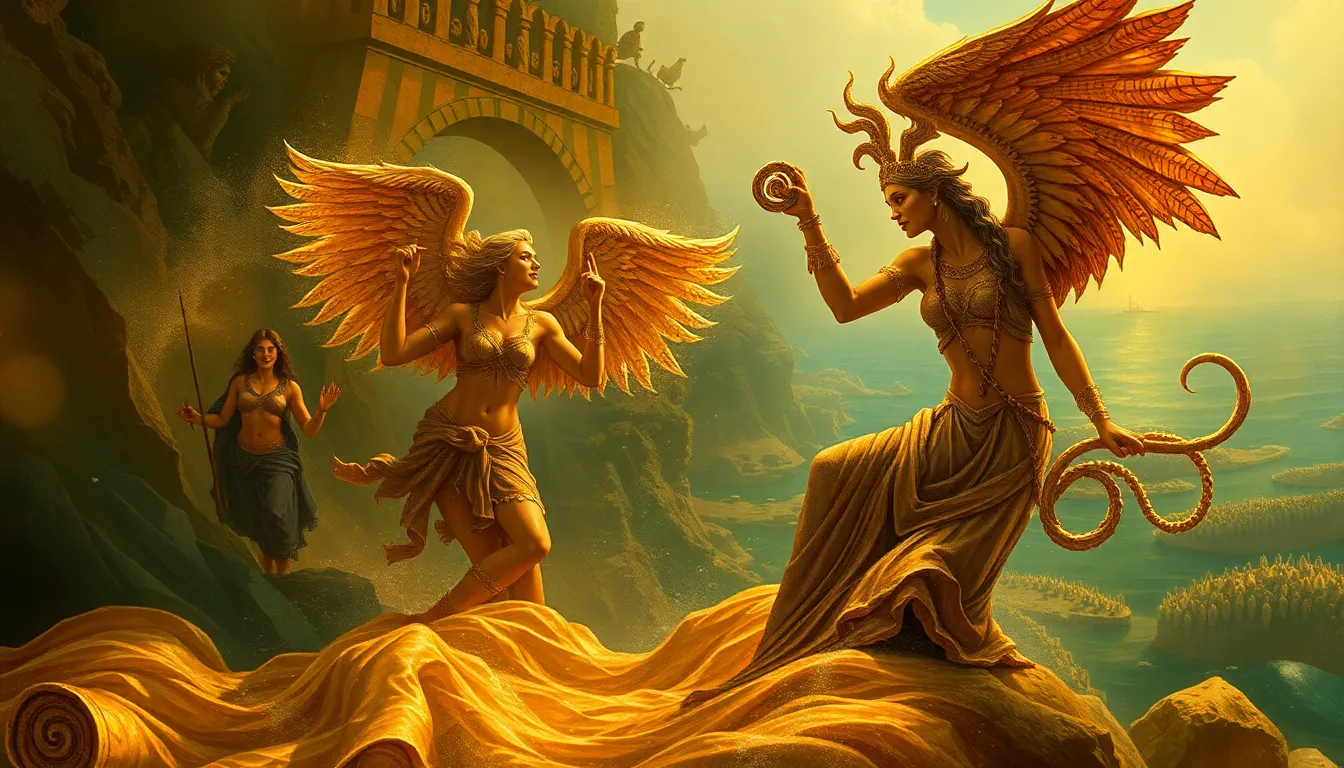Debunking Myths: The Truth About Sirens in Ancient Texts
I. Introduction
In the realm of Greek mythology, sirens are often depicted as enchanting creatures whose beautiful songs lure sailors to their doom. Traditionally thought of as perilous beings, sirens have become synonymous with temptation and danger. However, the significance of these mythical figures extends far beyond their deadly allure. This article aims to explore the historical context of sirens, debunk common misconceptions, and highlight their multifaceted roles in ancient texts.
II. Historical Context of Sirens
The origins of siren myths can be traced back to various ancient cultures, particularly in Greek and Roman traditions. Initially, sirens were described as bird-like creatures with women’s heads, embodying both beauty and danger.
- Origins of siren myths in ancient cultures: Sirens are believed to have originated in Greek mythology, where they were often associated with the sea and the dangers it presented to sailors.
- Evolution of sirens in literature and art: Over time, sirens evolved in artistic representations, becoming more humanized and often depicted as mermaid-like figures in later traditions.
- Comparison of sirens across different civilizations: While Greek sirens are well-known, Roman texts also reference similar beings, showcasing a shared cultural fascination with these enigmatic figures.
III. Common Myths About Sirens
Despite their rich mythology, several persistent myths about sirens overshadow their true nature. Let’s examine some of these common misconceptions.
A. Myth 1: Sirens are purely female figures
One of the most enduring myths is the belief that sirens are exclusively female. While they are predominantly portrayed as women, historical texts reveal a more nuanced representation.
- Examination of male representations: Some ancient stories depict male figures alongside sirens or even suggest male sirens, challenging the notion of a strictly feminine identity.
- Cultural implications of gender in siren mythology: The gendering of sirens reflects broader societal attitudes toward femininity and danger, often associating women with seduction and peril.
B. Myth 2: Sirens are solely dangerous creatures
Another widespread myth is that sirens are exclusively dangerous and malevolent. This oversimplification ignores their dual nature, as they can also embody benevolence and protection.
- Exploration of their dual nature (beautiful vs. deadly): While their songs are often fatal, some interpretations suggest that sirens also symbolize the beauty of nature and the allure of the unknown.
- Historical examples of sirens as benevolent figures: In some tales, sirens help stranded sailors or guide them to safety, illustrating their complex character.
IV. Sirens in Classical Literature
The portrayal of sirens in classical literature provides invaluable insights into their role in ancient society. One of the most notable works is Homer’s “Odyssey.”
A. Analysis of Homer’s “Odyssey”
In the “Odyssey,” sirens play a pivotal role in Odysseus’s journey, representing the temptations that can lead one astray.
- The role of sirens in Odysseus’s journey: Odysseus, warned by Circe, orders his men to plug their ears with beeswax and has himself tied to the mast to resist the sirens’ enchanting songs.
- Literary interpretations and their impact on the myth: This episode highlights themes of temptation, self-control, and the struggle between desire and duty, reinforcing the sirens’ complex symbolism.
B. Other notable texts featuring sirens
Beyond the “Odyssey,” sirens appear in various sources:
- Works by ancient poets and playwrights: Poets like Apollonius of Rhodes and playwrights such as Euripides incorporated sirens into their narratives, emphasizing their role as both seductresses and harbingers of doom.
- The portrayal of sirens in Roman texts: Roman authors like Ovid depicted sirens with a blend of beauty and menace, further embedding them in the cultural consciousness.
V. Symbolism of Sirens in Ancient Cultures
Sirens serve as powerful symbols in ancient cultures, representing various concepts that resonate with human experience.
- Sirens as symbols of temptation and danger: Their songs symbolize the seductive nature of temptation, leading individuals toward perilous decisions.
- The connection between sirens and the sea: The sea, often seen as unpredictable and chaotic, mirrors the dual nature of sirens, embodying beauty and danger.
- Psychological interpretations of siren myths: Sirens can be viewed as manifestations of inner conflicts, representing the struggle between desire and rationality.
VI. Modern Interpretations of Sirens
The image of sirens has evolved significantly in contemporary media, reshaping their mythological narrative.
- How contemporary media has reshaped the image of sirens: Modern portrayals often depict sirens as misunderstood figures, emphasizing empowerment and agency.
- The impact of siren stories in modern literature and film: From movies to novels, sirens continue to fascinate, often reflecting contemporary themes of identity and morality.
- Re-evaluating sirens in the context of today’s societal issues: The siren myth can be interpreted through lenses of feminism and environmentalism, making them relevant in discussions of agency and ecological awareness.
VII. Cultural Impact and Legacy of Sirens
The legacy of sirens extends beyond ancient texts, influencing various forms of art and culture throughout history.
- The influence of siren myths on art and music: Artists and composers have drawn inspiration from siren myths, creating works that capture their allure and danger.
- Continuing fascination with sirens in popular culture: From literature to video games, sirens remain a captivating subject, reflecting ongoing human intrigue with the unknown.
- Lessons drawn from ancient siren myths in modern contexts: The stories of sirens remind us of the complexities of desire and the consequences of our choices.
VIII. Conclusion
In summary, the exploration of sirens in ancient texts reveals a complex tapestry of symbolism and meaning. By debunking common myths about sirens, we gain a deeper understanding of their roles in mythology and their relevance in contemporary society. Recognizing the historical accuracy of these myths allows us to appreciate the richness of ancient cultures and the lessons they offer us today.




